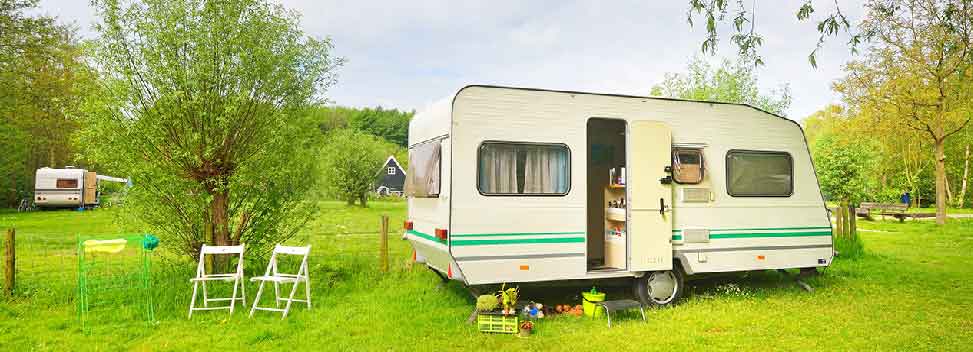How to Weigh your Touring Caravan
Written by Nick Grant
27 Jul 2018
6 min read

Before caravanning, one important requirement is ensuring your touring caravan and towing car don’t exceed their specified weights. Here’s a guide with tips and advice for weighing your touring caravan.
Just as any other vehicle, touring caravans need to be weighed in order to follow the legal requirements for safe driving and for not compromising the car’s performance in terms of fuel efficiency and air conditioning.
With so many touring caravans for sale in the market, sometimes it can be difficult to understand what the ideal caravan model is for you and how to head off into your first adventure in good conditions. Just like any other vehicle, touring caravans are built to sustain a certain maximum weight, and with a fully loaded caravan hitched to your car, your vehicle would be handling more weight that it typically does (e.g. bikes, portables TVs or radios, gas bottles, bedding and clothing, stored food, etc.).
The simple matter of exceeding the towing weight could make your touring caravan illegal to tow and could invalidate your touring caravan insurance if it’s proven that damage to a caravan was caused due to overload.
What should you know before weighing your caravan?
There are some words you should be familiarizing yourself with for your future caravan tours:- Aggregate Trailer Mass (ATM): the maximum weight of your caravan when loaded and without being hitched.
- Gross Combination Mass (GCM): the total weight of your rig.
- Gross Vehicle Mass (GVM): the maximum weight of your towing vehicle when loaded.
- Gross Trailer Mass: the actual weight of your loaded caravan, without being hitched to your towing vehicle.
- Mass in Running Order (MIRO): the caravan mass as equipped to the manufacturer’s standard specification. It varies within a model line.
- Maximum technically permissible laden mass (MTPLM) or Maximum Gross Weight (MGW): the heaviest total weight the caravan can operate. Exceeding this total weight could damage the tyres, the floor of the caravan, the axles, or even the safe towing. In some caravans, the MTPLM can be found on a plate near the entrance door.
- Nose Weight: the maximum weight that your caravan can apply to your vehicle’s tow ball.
How to start weighing your touring caravan?
To start weighting your touring caravan, the easiest option is finding a facility in place known as weighbridge, that lets you know the legal weight limit. A weighbridge is designed to allow vehicle owners to weight their cars and caravans or other vehicles, and it’s like a massive scale mounted on a concrete foundation available for public use across the UK. You can find your nearest weighbridge in the Department of Transport page. What do you need to do? Make sure your car and caravan are empty except for the legal equipment required during transit (e.g. spare wheels and batteries should remain inside). Avoid bringing stored food, gas bottles, or luggage. It’s important to weight the car with the full tank (the weight difference is big) to ensure that the car and caravan are at the minimum weight that they’re going to be when you’re driving. It might be a good idea to get a second measurement in the weighbridge, but this time just with the caravan. How can you do it? Move your towing car enough out of the platform in a safe position before uncoupling the caravan from the car. In this way the weighbridge can take a second reading for the touring caravan only. Afterwards, you’ll receive a printed certificate from the weighbridge office and you would know three figures: the minimum weight of the empty caravan, the minimum weight of your car, and the combined weight of both. You’ll know the weights up to which you can load your car and caravan by deducting the weighbridge car weight from the MAM, and the caravan’s weighbridge weight from the MTPLM.How to load a touring caravan?
If you are unsure of the combined weight of the objects you are loading in your touring caravan, the best safety guideline for your peace of mind is always not exceed the maximum weight figures on the side of caution. For safe and stable towing, it’s not just the weight of the caravan that’s important, but also how that weight is distributed. Manufacturers recommend to place heavy items in the low down, near the axle. All heavy items distributed in other parts of the caravan might affect the stability, especially at speed and in crosswinds. Lighter items should be placed in the top areas of the caravan.How can you reduce the weight of your touring caravan?
Sometimes we might consider taking with us our most useful items from home but maybe they are not so necessary after all, and you might to treat caravanning like backpacking to take only what you really need. Here are some tips to reduce the weight in your touring caravan:- Carry in your next caravan trip the most useful items you will need
- Reduce the storage food and buy the food and drink at your destination
- Replace cutlery and tableware for items made of glassware or melamine
- Invest in a portable solar panel rather than a fixed one - you will just need it with you when it’s necessary
- Do you have carpets? Maybe you can forget them in your caravanning trip and reduce weight
- Freestanding table can be left if you’re not travelling with more than one person
- Make sure all the electrical appliances are going to be used
- Leave the awning at home if you are not going to use it